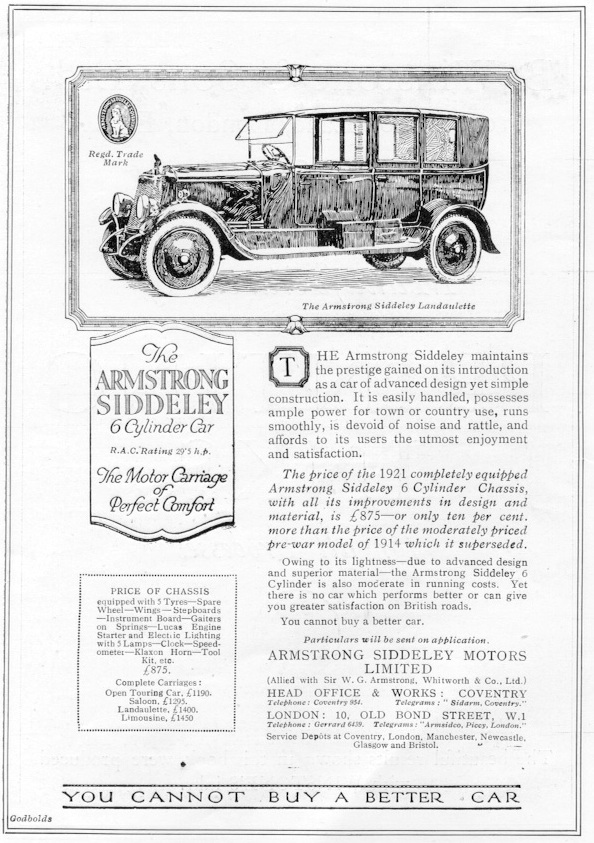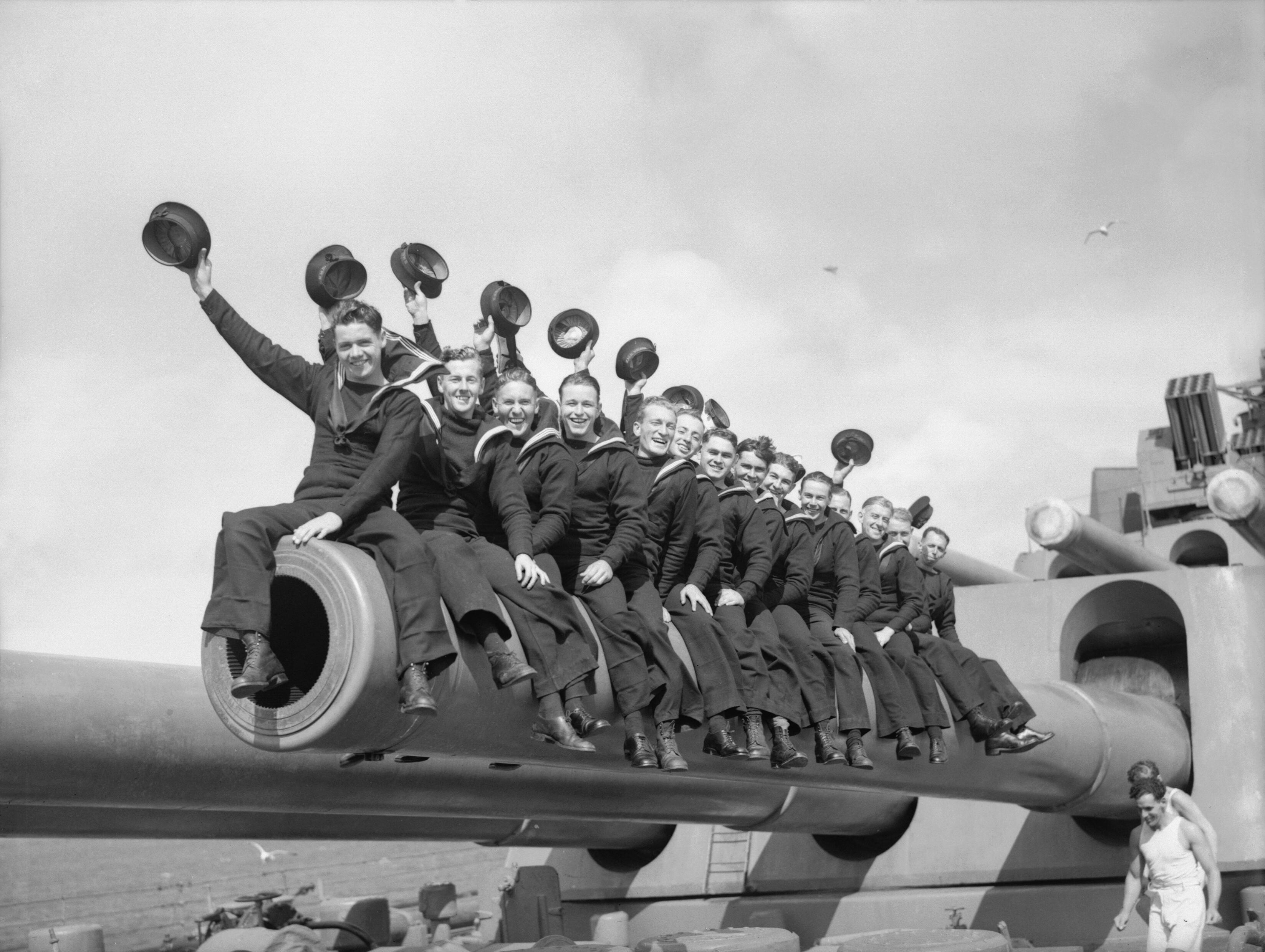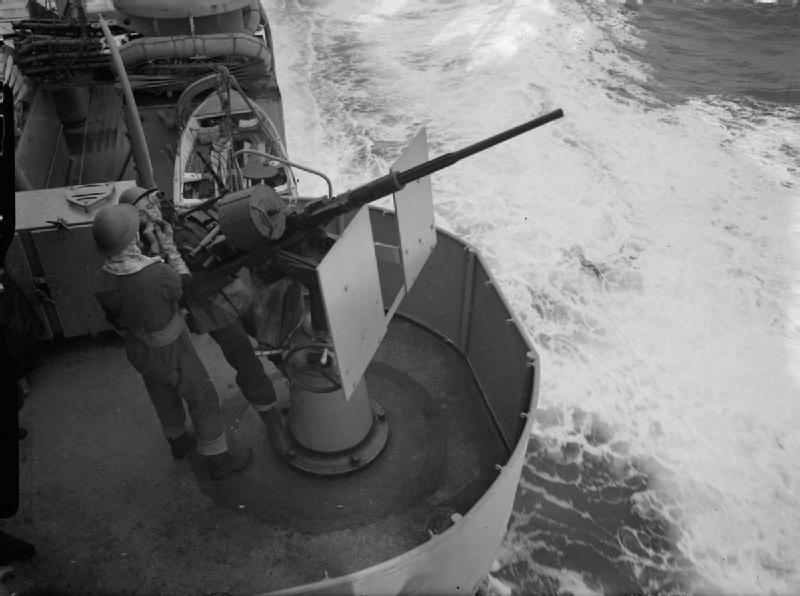|
George Campbell Ross
George Campbell Ross Order of the Bath, C.B., Order of the British Empire, C.B.E. (9 August 1900 – 30 July 1993) was an Engineer and a Rear Admiral in Britain's Royal Navy. He was also the son of Sir Archibald Ross OBE (1867 - March 19, 1931), a pioneering marine engineering, marine engineer. Service biography World War I He served on HMS Warspite (03), HMS Warspite, HMS P59, HM Submarine P59 and HMS Vendetta during World War I. Interwar Engineering Courses at RN College, Greenwich, and RN Engineering College, Keyham 1919–1921; HMS Hawkins, Flagship of China Station 1921–1924. Lecturer in Marine Engineering, RN Engineering College 1924–1927; HMS Effingham, Flagship of East Indies Station 1927–1929; HM Dockyard, Chatham 1929–1931; HMS Rodney (29), Atlantic Fleet 1931–1933; Invergordon Mutiny 1931; Assistant Naval Attache, British Embassy, Tokyo 1933–1936; Liaison Officer to Japanese Flagship Asigara, Coronation Review 1937; introduced Oerlikon 20 mm cannon to the ... [...More Info...] [...Related Items...] OR: [Wikipedia] [Google] [Baidu] |
Order Of The Bath
The Most Honourable Order of the Bath is a British order of chivalry founded by King George I of Great Britain, George I on 18 May 1725. Recipients of the Order are usually senior British Armed Forces, military officers or senior Civil Service (United Kingdom), civil servants, and the monarch awards it on the advice of His Majesty's Government. The name derives from an elaborate medieval ceremony for preparing a candidate to receive his knighthood, of which ritual bathing (as a symbol of Ritual purification, purification) was an element. While not all knights went through such an elaborate ceremony, knights so created were known as "knights of the Bath". George I constituted the Knights of the Bath as a regular Order (honour), military order. He did not revive the order, which did not previously exist, in the sense of a body of knights governed by a set of statutes and whose numbers were replenished when vacancies occurred. The Order consists of the Sovereign of the United King ... [...More Info...] [...Related Items...] OR: [Wikipedia] [Google] [Baidu] |
1993 Deaths
This is a list of lists of deaths of notable people, organized by year. New deaths articles are added to their respective month (e.g., Deaths in ) and then linked below. 2025 2024 2023 2022 2021 2020 2019 2018 2017 2016 2015 2014 2013 2012 2011 2010 2009 2008 2007 2006 2005 2004 2003 2002 2001 2000 1999 1998 1997 1996 1995 1994 1993 1992 1991 1990 1989 1988 1987 1986 Earlier years ''Deaths in years earlier than this can usually be found in the main articles of the years.'' See also * Lists of deaths by day * Deaths by year (category) {{DEFAULTSORT:deaths by year ... [...More Info...] [...Related Items...] OR: [Wikipedia] [Google] [Baidu] |
1900 Births
As of March 1 ( O.S. February 17), when the Julian calendar acknowledged a leap day and the Gregorian calendar did not, the Julian calendar fell one day further behind, bringing the difference to 13 days until February 28 ( O.S. February 15), 2100. Summary Political and military The year 1900 was the end of the 19th century and the beginning of the 20th century. Two days into the new year, the U.S. Secretary of State John Hay announced the Open Door Policy regarding China, advocating for equal access for all nations to the Chinese market. The Galveston hurricane would become the deadliest natural disaster in United States history, killing between 6,000 and 12,000 people, mostly in and near Galveston, Texas, as well as leaving 10,000 people homeless, destroying 7,000 buildings of all kinds in Galveston. As of 2025, it remains the fourth deadliest Atlantic hurricane on record. An ongoing Boxer Rebellion in China escalates with multiple attacks by the Boxers on Chines ... [...More Info...] [...Related Items...] OR: [Wikipedia] [Google] [Baidu] |
Royal Navy Rear Admirals
Royal may refer to: People * Royal (name), a list of people with either the surname or given name * A member of a royal family or royalty Places United States * Royal, Arkansas, an unincorporated community * Royal, Illinois, a village * Royal, Iowa, a city * Royal, Missouri, an unincorporated community * Royal, Nebraska, a village * Royal, Franklin County, North Carolina, an unincorporated area * Royal, Utah, a ghost town * Royal, West Virginia, an unincorporated community * Royal Gorge, on the Arkansas River in Colorado * Royal Township (other) Elsewhere * Mount Royal, a hill in Montreal, Canada * Royal Canal, Dublin, Ireland * Royal National Park, New South Wales, Australia Arts, entertainment, and media * ''Royal'' (Jesse Royal album), 2021 * Royal (Ayo album), 2020 * '' The Royal'', a British medical drama television series * '' The Royal Magazine'', a monthly British literary magazine published between 1898 and 1939 * '' The Raja Saab'', working ti ... [...More Info...] [...Related Items...] OR: [Wikipedia] [Google] [Baidu] |
Paul Behrens (banker)
Paul Behrens (1893–1984) was a clockmaker in Lübeck in northern Germany. Life Behrens was the son of Paul Behrens sr, who himself had been a clockmaker in Lübeck. Paul Behrens jr took over the management of the family company ("Uhrenhaus Behrens") in 1936 and remained at its helm until 1975. Behrens is best known for his reconstruction of the peal of bells of St. Mary's Church in Lübeck and his creation of the new Astronomical Clock in the same church (the original peal of bells and Astronomical Clock had been destroyed in the Bombing of Lübeck in World War II During World War II, the city of Lübeck was the first German city to be attacked in substantial numbers by the Royal Air Force. The attack on the night of 28 March 1942 created a firestorm that caused severe damage to the historic centre, wit ...). He also ensured the financing of these initiatives and was able to give the completed clock to the church in 1967. In the same year, the city of Lübeck awarded P ... [...More Info...] [...Related Items...] OR: [Wikipedia] [Google] [Baidu] |
British Admiralty
The Admiralty was a Departments of the Government of the United Kingdom, department of the Government of the United Kingdom that was responsible for the command of the Royal Navy. Historically, its titular head was the Lord High Admiral of the United Kingdom, Lord High Admiral – one of the Great Officers of State. For much of its history, from the early Admiralty in the 18th century, 18th century until its abolition, the role of the Lord High Admiral was almost invariably put "in commission" and exercised by the Lords Commissioner of the Admiralty, who sat on the governing Board of Admiralty, rather than by a single person. The Admiralty was replaced by the Admiralty Board (United Kingdom), Admiralty Board in 1964, as part of the reforms that created the Ministry of Defence (United Kingdom), Ministry of Defence and its Navy Department (Ministry of Defence), Navy Department (later Navy Command (Ministry of Defence), Navy Command). Before the Acts of Union 1707, the Office of t ... [...More Info...] [...Related Items...] OR: [Wikipedia] [Google] [Baidu] |
Armstrong Siddeley
Armstrong Siddeley was a British engineering group that operated during the first half of the 20th century. It was formed in 1919 and is best known for the production of luxury vehicles and aircraft engines. The company was created following the purchase by Armstrong Whitworth of Siddeley-Deasy, a manufacturer of luxury motor cars that were marketed to the top echelon of society. After the merge of companies, this focus on quality continued throughout in the production of cars, aircraft engines, gearboxes for tanks and buses, rocket and torpedo motors, and the development of railcars. Company mergers and takeovers with Hawker Aviation and Bristol Aeroplane Company, Bristol Aero Engines saw the continuation of the car production which ceased in August 1960. The company was absorbed into the Rolls-Royce Limited, Rolls-Royce conglomerate which was interested in the aircraft and aircraft engine business. Eventually, the remaining spares and all motor car interests were sold to the ... [...More Info...] [...Related Items...] OR: [Wikipedia] [Google] [Baidu] |
Force H
Force H was a British naval formation during the Second World War. It was formed in late-June 1940, to replace French naval power in the western Mediterranean removed by the French armistice with Nazi Germany. The force occupied an odd place within the naval chain of command. Normal British practice was to have naval stations and fleets around the world, whose commanders reported to the First Sea Lord via a flag officer. Force H was based at Gibraltar but there was already a flag officer at the base, Flag Officer Commanding, North Atlantic. The commanding officer of Force H did not report to this Flag Officer but directly to the First Sea Lord, Admiral of the Fleet Sir Dudley Pound. Hunt for the ''Admiral Graf Spee'' In anticipation of the outbreak of World War 2 on 3 September 1939 the German Kriegsmarine had already deployed the two heavy cruisers and as commerce raiders in the North and South Atlantic. When these ships started operating against British and French sh ... [...More Info...] [...Related Items...] OR: [Wikipedia] [Google] [Baidu] |
HMS Nelson (28)
HMS ''Nelson'' (pennant number: 28) was the name ship of her class of two battleships built for the Royal Navy in the 1920s. They were the first battleships built to meet the limitations of the Washington Naval Treaty of 1922. Entering service in 1927, the ship spent her peacetime career with the Atlantic and Home Fleets, usually as the fleet flagship. During the early stages of World War II, she searched for German commerce raiders, missed participating in the Norwegian Campaign after she was badly damaged by a mine in late 1939, and escorted convoys in the Atlantic Ocean. In mid-1941 ''Nelson'' escorted several convoys to Malta before being torpedoed in September. After repairs she resumed doing so before supporting the British invasion of French Algeria during Operation Torch in late 1942. The ship covered the invasions of Sicily (Operation Husky) and Italy (Operation Avalanche) in mid-1943 while bombarding coastal defences during Operation Baytown. During the Normandy ... [...More Info...] [...Related Items...] OR: [Wikipedia] [Google] [Baidu] |
HMS Manchester (15)
HMS ''Manchester'' was a light cruiser built for the Royal Navy in the late 1930s, one of three ships in the ''Gloucester'' subclass. Completed in 1938, she was initially deployed with the East Indies Station and had a relatively short but active career. When World War II began in September 1939, the cruiser began escorting convoys in the Indian Ocean until she was ordered home two months later. In late December ''Manchester'' began conducting patrols in the Norwegian Sea enforcing the blockade of Germany. Beginning in April 1940 the ship played a minor role in the Norwegian Campaign, mostly escorting convoys. She was assigned to anti-invasion duties in May–November in between refits. In November the cruiser was tasked to escort a convoy through the Mediterranean and participated in the Battle of Cape Spartivento. ''Manchester'' was refitting during most of early 1941, but began patrolling the southern reaches of the Arctic Ocean in May. The cruiser was detached to escort a ... [...More Info...] [...Related Items...] OR: [Wikipedia] [Google] [Baidu] |
Oerlikon 20 Mm Cannon
The Oerlikon 20 mm cannon is a series of autocannons based on an original German Becker Type M2 20 mm cannon design that appeared very early in World War I. It was widely produced by Oerlikon Contraves and others, with various models employed by both Allied and Axis forces during World War II. Many versions of the cannon are still used. Blowback-operated models History Origins During World War I, the German industrialist Reinhold Becker developed a 20 mm caliber cannon, known now as the 20 mm Becker using the advanced primer ignition blowback (API blowback) method of operation. This used a 20×70mmRB cartridge and had a cyclic rate of fire of 300 rpm. It was used on a limited scale as an aircraft gun on ''Luftstreitkräfte'' warplanes, and an anti-aircraft gun towards the end of that war. Because the Treaty of Versailles banned further production of such weapons in Germany, the patents and design works were transferred in 1919 to the Swiss firm SEMAG (''Seebach M ... [...More Info...] [...Related Items...] OR: [Wikipedia] [Google] [Baidu] |







